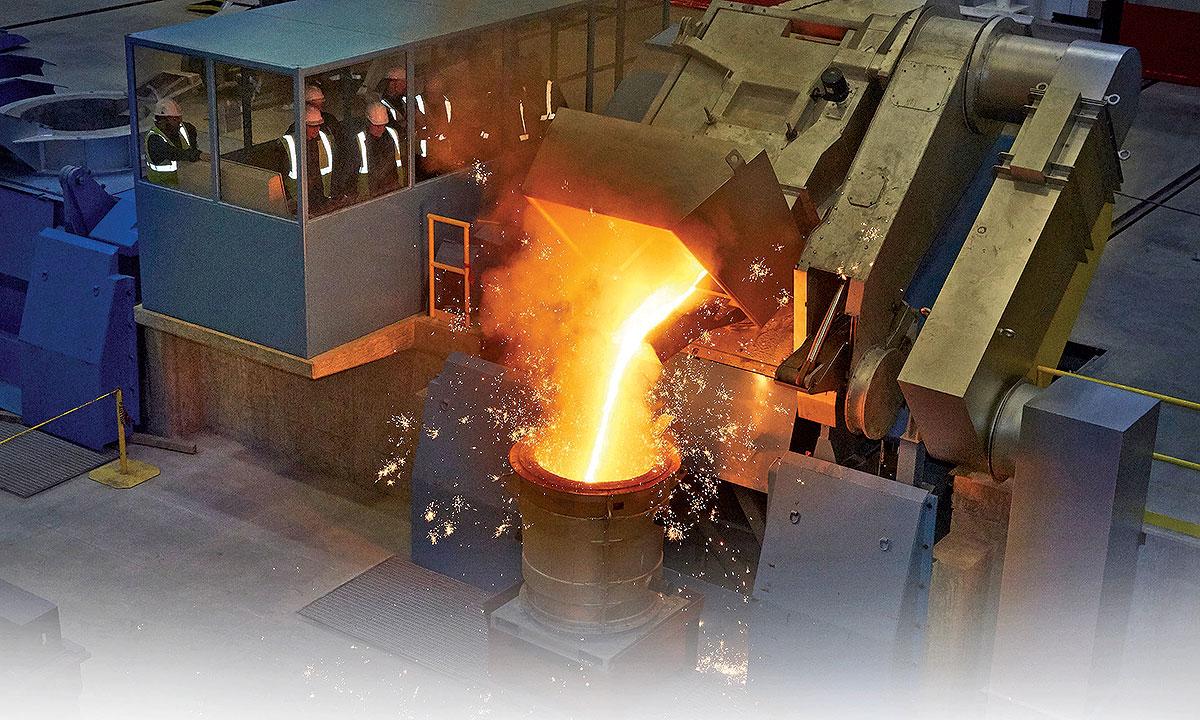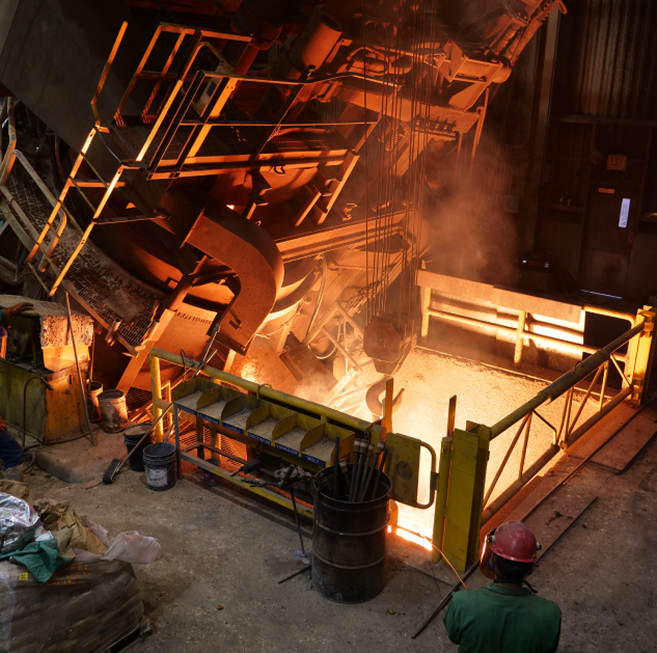Essential introduction to the Metal Casting process and its industrial applications
Discover the Innovative Techniques Utilized in a Metal Foundry for Superior Casting Outcomes
In today's affordable production landscape, metal foundries are increasingly adopting ingenious strategies to boost spreading outcomes - Metal Casting. Advanced computer system simulations enable accurate modeling of molten metal behavior, while 3D printing makes it possible for rapid manufacturing of complicated molds. Furthermore, environmentally friendly products and automation streamline operations. These advancements promise substantial enhancements in efficiency and high quality control. Nonetheless, the influence of these technologies on sustainability and production techniques remains to be totally explored
Advanced Computer System Simulations in Metal Casting
Advanced computer simulations have actually changed the metal casting procedure by boosting precision and effectiveness. These innovative tools enable designers to produce online models of actors components, enabling them to anticipate the actions and evaluate of molten metal during the casting stage. By imitating numerous specifications such as temperature level, flow rate, and air conditioning rates, manufacturers can identify potential issues prior to physical manufacturing starts.
This proactive technique decreases waste and minimizes pricey mistakes, ultimately bring about improved product high quality. In addition, simulations assist in the optimization of mold designs, making certain that they fulfill the particular needs of each job. The integration of computational liquid characteristics (CFD) and finite element evaluation (FEA) further adds to the accuracy of these simulations, providing insights that were formerly unattainable. Consequently, progressed computer system simulations have actually ended up being an indispensable component of contemporary metal foundries, significantly progressing the market's capacities.
3D Printing for Mold And Mildews and Patterns
3D printing has become a groundbreaking technique for producing mold and mildews and patterns in the metal foundry industry. This technology enables the quick production of complex geometries that conventional manufacturing methods battle to accomplish. By utilizing additive manufacturing, foundries can produce elaborate styles with decreased lead times and material waste. The capability to generate mold and mildews as needed enables better flexibility in design models, facilitating faster prototyping and modifications.
3D printing can make use of a range of materials, including steels and plastics, customized to specific casting demands. This adaptability boosts the accuracy of molds, leading to exceptional casting end results with boosted surface coatings. In addition, the decrease in the number of parts needed simplifies assembly procedures, additionally maximizing manufacturing efficiency. As foundries remain to embrace 3D printing, they are poised to redefine industry standards, paving the method for development and boosted efficiency in metal spreading operations.
Eco-Friendly Materials and Processes
As the metal foundry industry encounters raising pressure to lower its environmental footprint, the fostering of environment-friendly products and processes has ended up being important. Shops are currently exploring sustainable choices to standard products, such as making use of recycled metals and bio-based binders. These products not only lessen waste however also reduced energy consumption during manufacturing.
In addition, developments in sand casting strategies have led to making use of artificial sands that are less damaging to the atmosphere. Factories are also applying innovative procedures like liquified metal treatment that minimizes emissions and improves the quality of actors items.
Water-based layers have actually replaced poisonous solvents, advertising a much safer job setting. By integrating these environmentally friendly methods, metal foundries can markedly lower their environmental impact while preserving top quality casting results. This shift not just benefits the environment however additionally lines up with the expanding consumer demand for lasting manufacturing solutions
Automation and Robotics in Foundry Operations
While the metal foundry industry welcomes development, the assimilation of automation and robotics is changing operations Read More Here significantly. Automated systems enhance procedures such as mold and mildew making, metal pouring, and casting completing, substantially boosting effectiveness. Robotics facilitate the handling of hefty materials, lowering the danger of workplace injuries and ensuring much safer atmospheres.

Even more, using automated led vehicles (AGVs) enhances material transport within centers, guaranteeing prompt distribution of components to suitable workstations. By implementing these modern technologies, foundries can adapt to rising and fall needs with greater agility, eventually causing boosted productivity and competition in the market. As automation and robotics proceed to advance, they hold the possible to redefine standard foundry methods and drive more advancements in casting strategies.
Real-Time Surveillance and High Quality Control Techniques
The innovations in automation and robotics have led the way for much more sophisticated approaches to high quality guarantee in metal foundries. Real-time tracking systems make use of innovative sensing units and information analytics to track important criteria throughout the casting procedure. These systems constantly evaluate variables such as pressure, temperature, and product composition, making it possible for prompt discovery of discrepancies from developed requirements.
Quality control strategies currently integrate maker discovering formulas that evaluate historical information to predict potential flaws prior official website to they take place. This proactive technique lessens waste and boosts general manufacturing performance. In addition, incorporated comments loopholes permit quick adjustments, making sure that each casting satisfies strict quality requirements.
The execution of digital twins-- virtual replicas of physical properties-- has actually also changed quality control, permitting designers to mimic and maximize procedures in real-time. With each other, these cutting-edge strategies significantly improve the reliability and quality of castings, setting brand-new sector requirements in metal foundry procedures.
Regularly Asked Inquiries
What Sorts of Metals Are Generally Cast in Shops?
Frequently cast steels in foundries include light weight aluminum, bronze, iron, and brass. Each metal exhibits unique residential properties, making them ideal for different applications, such as vehicle components, machinery, and creative sculptures, enhancing their flexibility in manufacturing.

The length of time Does the Casting Refine Normally Take?
The spreading process usually takes a number of hours to days, depending upon factors such as the complexity of the mold, kind of metal used, and air conditioning demands. Each phase influences the total period significantly.
What Safety and security Steps Remain In Place for Foundry Workers?

Just how Are Problems in Castings Identified and Addressed?
Defects in castings are identified via aesthetic evaluations and non-destructive testing techniques. When identified, foundry employees address them by refining processes, adjusting material make-ups, and applying rehabilitative steps to guarantee quality and conformity with standards.
What Is the Cost Range for Metal Casting Services?
The cost array for metal spreading solutions usually varies in between $1 to $10 per extra pound, depending upon aspects such as material type, intricacy of the style, and manufacturing volume, affecting total pricing substantially.
In today's affordable production landscape, metal foundries are significantly adopting cutting-edge techniques to boost casting outcomes. As the metal foundry sector faces enhancing stress to reduce its ecological footprint, the fostering of eco-friendly products and procedures has actually ended up being vital. Shops are now exploring lasting choices to standard materials, such as using recycled metals and bio-based binders. By integrating these green methods, metal foundries can substantially lower their ecological impact while keeping premium spreading outcomes. The improvements hop over to these guys in automation and robotics have paved the means for a lot more innovative methods to top quality assurance in metal foundries.